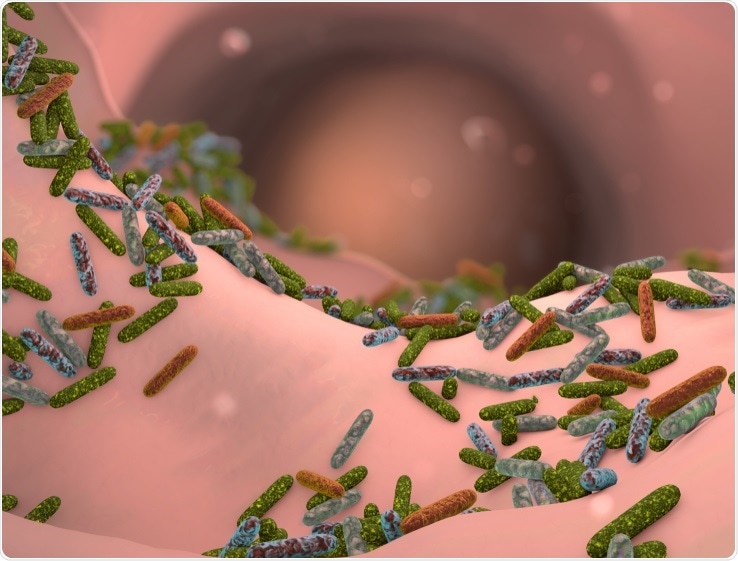
Gut-boosting food may put an end to childhood malnutrition worldwide
Researchers have developed a new type of food that improves gut bacteria in malnourished children and is better at kick-starting growth than standard food therapy.

Nathan D
every | Shutterstock
In an initial clinical trial involving children in Bangladesh, a combination of nutrients from bananas, peanuts, soy and chickpeas – all foods that were affordable and culturally acceptable – repaired the children’s gut microbiomes by boosting key growth-promoting microbes.
The study, which was recently published in the journal Science, was conducted by an interdisciplinary team of researchers at Washington University School of Medicine in St. Louis and the International Centre for Diarrhoeal Disease Research in Dhaka, Bangladesh.
The findings lend weight to the notion that growth during infanthood and childhood is linked to the healthy development of the gut microbiome following birth.
Childhood malnutrition is a global health problem
Childhood malnutrition represents a global health issue, with a lack of access to adequate amounts of affordable, nutritious food meaning about 150 million children under the age of five are malnourished, according to the World Health Organization.
As well as malnourished children being weak and slower to reach developmental milestones, they have incomplete or immature gut microbiomes, compared with children of the same age who are healthy.
Current food therapies that have been designed to address the issue increase levels of key nutrients in children’s diets. While consuming these foods does make children less likely to die, other consequences of malnutrition such as stunted growth, poor immunity and impaired cognitive function remain largely unresponsive to the therapeutic foods.
However, Gordon believes this is because the foods have not been designed based on the effects they have on how the gut microbiome develops.
Boosting good bacteria
Now, Gordon and colleagues have studied the main types of bacteria found in the guts of healthy children and tested which combinations of food ingredients boost these bacterial communities in mice and pigs.
They then tested the diets in a one-month trial involving 63 Bangladeshi children, aged 12 to 18 months, who had been diagnosed with moderate acute malnutrition. The children were ill, but not yet close to dying.
The infants were randomly assigned to one of four therapeutic food groups. In three of the groups, each child consumed one of three newly designed foods, while each child in the fourth group received a standard food therapy that had not been developed considering the impact it may have on gut microbes.
While monitoring the children’s recovery, the team used a set of measuring tools that had been designed based on advances in genomic medicine. The tools enabled a much more detailed definition of the genomic features linked to malnutrition, the mechanisms underlying malnutrition and treatment efficacy.
The researchers found that one therapeutic food stood out from the rest, which was a combination of nutrients found in bananas, peanut flour, chickpeas, and soy.
Upon measuring 1,300 blood proteins, including those linked to bone growth, immune function, metabolism, and brain development, the team found that a paste made up of these ingredients caused a shift towards a healthy state, compared with what was seen in the other groups.
The team also found that children who received this particular food combination had bacterial gut communities that had changed in a way that resembled the microbial communities found in healthy children of the same age.
Gordon confirms that it was the banana, peanut, chickpea and soy combination that was the most effective at repairing the gut microbiome in both animals and humans, with other diets mainly comprising lentils or rice not faring so well and sometimes even damaging the gut more. He says it is not yet clear why these particular foods work so well, but that a much larger trial is now underway to test how the diet affects children’s weight and height in the long term.
"This is a community of microbes that extends far beyond the gut. It is intimately linked to health status and we need to figure out the mechanisms so they can also be repaired later in life."
Gordon stressed that their efforts to repair the disrupted gut microbiomes in malnourished children have the potential to provide more informed guidelines on feeding infants during the first years of life in a way that will increase the likelihood of them developing healthy gut microbiomes.
"We need to be effective stewards of the precious microbial resources of our children. If we are, the effects may be long-lived and herald a new dimension to preventive medicine − one that starts with their developing microbiomes," he concludes.
Journal references:
- Gejrig, J. L., et al. (2019). Effects of microbiota-directed foods in gnotobiotic animals and undernourished children. Science. DOI: 10.1126/science.aau4732.
- Raman, A. S., et al. (2019). A sparse covarying unit that describes healthy and impaired human gut microbiota development. Science. DOI: 10.1126/science.aau4735.























.png)











No hay comentarios:
Publicar un comentario